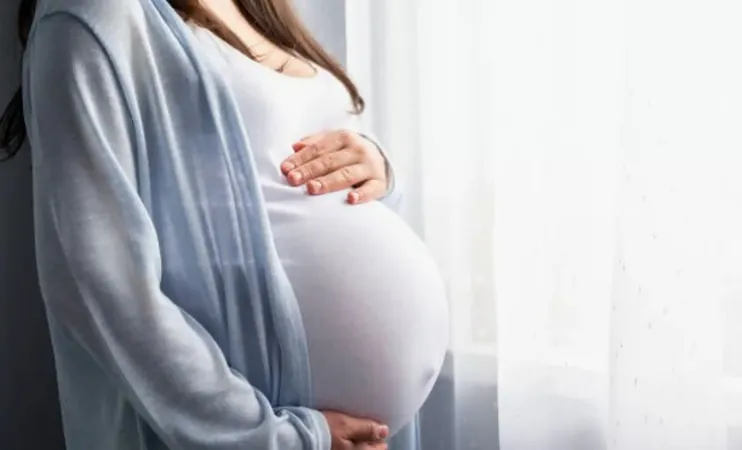
Shocking Study Reveals Home Births Could Be Just as Safe as Hospitals! What Expectant Parents Need to Know
2024-11-20
Author: Ken Lee
The decision of where to give birth has always been a personal one for many parents, influenced by various factors including tradition, medical advice, and individual circumstances. An eye-opening study conducted by researchers at Oregon State University (OSU) challenges the conventional wisdom surrounding childbirth safety, leading many to reconsider where they choose to welcome their little ones.
Hospitals vs. Birth Centers: The Age-Old Debate
For years, health organizations like the American College of Gynecologists and Obstetricians have championed hospitals and accredited birth centers as the safest birth locales. These facilities boast state-of-the-art equipment and highly trained professionals, ensuring prompt attention during emergencies. However, the rise of birth centers, which offer a more comforting, home-like atmosphere, raises the pertinent question: Could home births or birth centers provide equally safe alternatives for low-risk pregnancies?
Groundbreaking Insights from the OSU Study
The OSU research team, spearheaded by Marit Bovbjerg and Melissa Cheyney, examined over 110,000 planned community births—either at home or in birth centers—across the United States from 2012 to 2019. For their analysis, they focused on low-risk pregnancies, defined as those involving single, full-term babies positioned head-down without significant maternal health complications.
The study's major revelation? They found “no difference in safety” when comparing home births to those at birth centers for this subset of pregnancies. “Our study is the first to provide evidence that these two birth settings are equally safe,” Bovbjerg stated, presenting essential findings based on data from two national registries of planned community births.
Key Criteria Examined:
- Type of pregnancy: Single baby - Gestation: Full-term delivery (≥37 weeks) - Position: Cephalic presentation - Absence of complications such as gestational diabetes or pre-eclampsia. - Primary Outcomes Measured: Maternal and neonatal outcomes, including APGAR scores and rates of postpartum hemorrhaging.
Why Are More Parents Opting for Home Births?
The trend of home births has surged in the last two decades, now accounting for roughly 2% of all U.S. deliveries. Many families are motivated by the desire for a more personalized birth experience and a wish to avoid what they perceive to be negative encounters in hospital settings.
Numerous studies have documented accounts of patients in hospitals feeling overlooked, mistreated, or pushed towards procedures without proper consent. These experiences have prompted a number of expectant parents to investigate alternatives that might provide a more positive atmosphere for childbirth.
Can Home Births Manage Emergencies Effectively?
A primary concern surrounding home births is the ability to handle emergencies. The OSU study addressed this by highlighting that licensed midwives are adequately trained to identify potential complications swiftly and facilitate timely hospital transfers when necessary. This collaborative relationship between midwives and healthcare facilities is critical in ensuring safety.
Some essential strategies for emergency preparedness in community births include: - Training in neonatal resuscitation and managing significant blood loss. - Clear protocols for transferring patients to hospitals when required. - Established communication channels between midwives and nearby hospitals to guarantee a smooth transition if complications arise.
Implications for the Future of Childbirth
The findings of this study not only challenge entrenched beliefs about where childbirth is safest but also advocate for a more inclusive perspective regarding various birthing environments. As researchers Bovbjerg and Cheyney noted, there is an urgent need to shift perceptions and enhance awareness of the positive contributions community births can offer in enhancing maternal care.
Is The Future of Childbirth More Inclusive?
By nurturing greater understanding and collaboration between hospitals and midwives, and by addressing patient concerns about the hospital experience, the future of childbirth could become more accommodating to a wider array of parental choices. As healthcare continues to evolve, it seems the question of where to give birth may become less about one location being 'better' than another and more about understanding the unique needs of each individual family.
Expectant parents should arm themselves with the latest research and consider all their options, ensuring the best possible experience for themselves and their newborns!




 Brasil (PT)
Brasil (PT)
 Canada (EN)
Canada (EN)
 Chile (ES)
Chile (ES)
 España (ES)
España (ES)
 France (FR)
France (FR)
 Hong Kong (EN)
Hong Kong (EN)
 Italia (IT)
Italia (IT)
 日本 (JA)
日本 (JA)
 Magyarország (HU)
Magyarország (HU)
 Norge (NO)
Norge (NO)
 Polska (PL)
Polska (PL)
 Schweiz (DE)
Schweiz (DE)
 Singapore (EN)
Singapore (EN)
 Sverige (SV)
Sverige (SV)
 Suomi (FI)
Suomi (FI)
 Türkiye (TR)
Türkiye (TR)